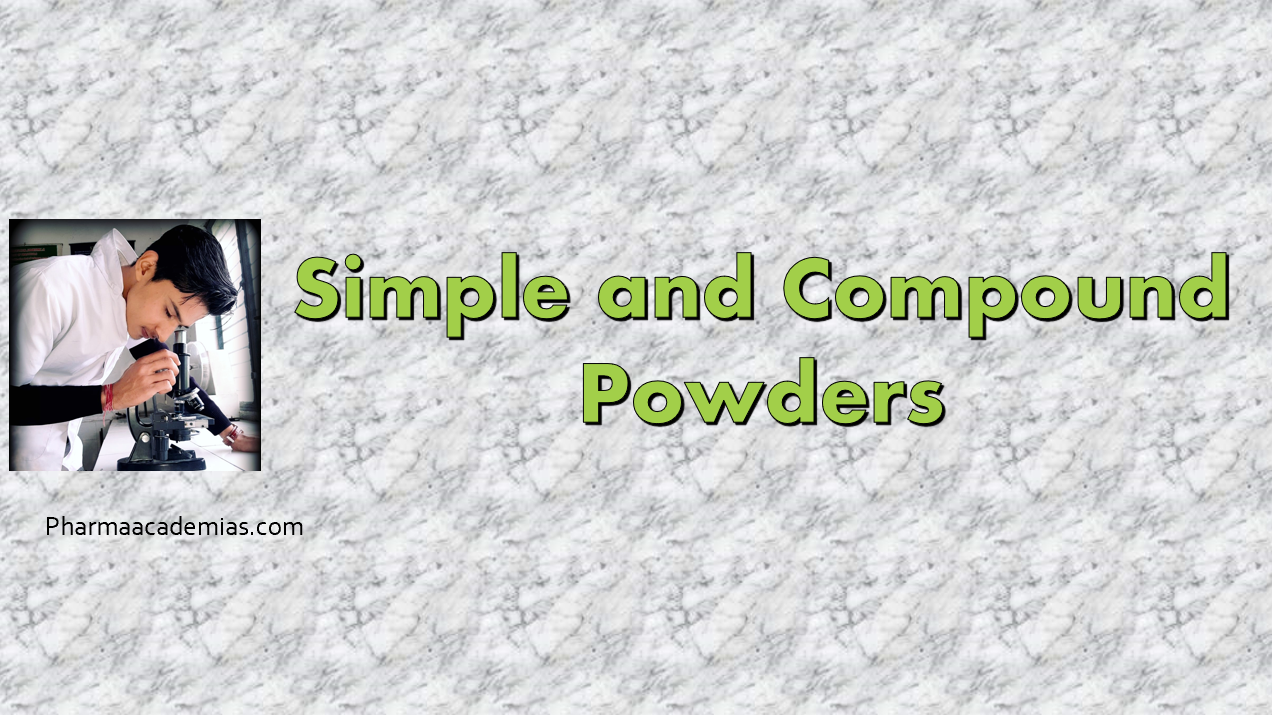As pharmaceutical dosage forms, Powders play a crucial role in delivering medications to patients. Their classification into simple and compound powders is based on the complexity of their formulation, considering the number of active and inactive ingredients involved.
Simple Powders
Definition:
Simple powders, known as powder mixtures, consist of one or more pharmacologically active substances and may include inert excipients or diluents. These powders are created by blending and intimately mixing the powdered components.
Composition
Single Active Ingredient: Simple powders can contain a single pharmacologically active substance. For example, a powdered form of aspirin where aspirin is the sole active ingredient.
Mixtures of Actives: They can also involve a mixture of active ingredients, creating a combination that serves a specific therapeutic purpose.
Application
Straightforward Administration: Simple powders are often used when administering a single or mixed active ingredient in a powdered form is straightforward.
Dosage Flexibility: They provide flexibility in dosing, making it easier to customize the amount of each active ingredient.
Examples
1. Aspirin Powder: Consisting powdered aspirin as the sole active ingredient.
2. Combination Antibiotic Powder: A mixture of two different antibiotics for a specific therapeutic purpose.
Compound Powders
Definition:
Compound powders involve the combination of two or more ingredients, which may include active pharmaceutical ingredients (APIs), diluents, binders, disintegrants, and flavoring agents. These powders are more complex, requiring careful formulation to achieve specific therapeutic or manufacturing objectives.
Composition
Multiple Components: Compound powders can contain various components, each serving a distinct purpose in the formulation.
Excipients: In addition to active ingredients, they often include excipients for stability, palatability, or to achieve specific pharmaceutical characteristics.
Application
Specific Therapeutic Goals: Compound powders are used when a specific combination of active and inactive ingredients is necessary to achieve the desired therapeutic effect.
Controlled Release: They may be formulated for controlled release, improved taste masking, or other specific characteristics.
Examples
1. Powder for Oral Reconstitution:It involves combining active ingredients and excipients designed for reconstitution into a liquid for oral administration
2. Complex Antibiotic Powder: Combining multiple antibiotics with stabilizers and flavoring agents for a pediatric formulation.
Importance of Understanding the Difference
1. Precision in Dosing:
Knowing whether a powder is simple or compound ensures precision in dosing, helping healthcare professionals and patients administer the correct amount of medication.
2. Therapeutic Intent:
The classification based on simplicity or complexity indicates whether the powder is a straightforward single-ingredient formulation or a more intricate combination designed for a specific therapeutic intent.
3. Patient Compliance:
Compound powders may offer advantages such as improved palatability or easier administration, contributing to better patient compliance than simple mixtures.
Understanding the distinction between simple and compound powders is crucial in pharmaceutical formulation. It allows for a tailored approach to medication delivery, considering the complexity of therapeutic goals and the characteristics required for optimal patient outcomes. Whether a simple mixture for straightforward administration or a compound formulation for specific therapeutic needs, powders remain a versatile and effective means of delivering pharmaceutical agents.

